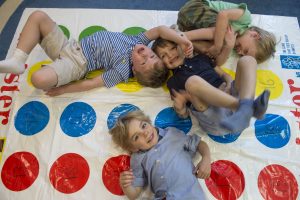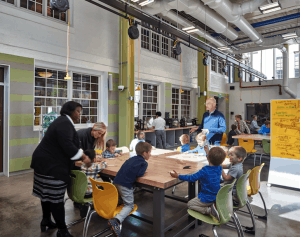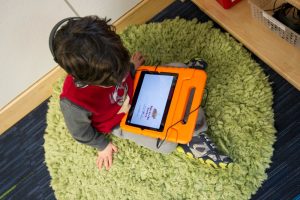If you’ve started searching for a private kindergarten for your son, you’ve probably already realized, the differences between schools are not always very clear.
Most private kindergartens have strong academic programs, especially those that are part of larger elementary and middle schools. So academics can’t be the only area you look at when you compare schools.
What else should you look at, then?
First, remember, you’re not just sending your son to kindergarten. You’re sending him to a school that will take him from kindergarten (or even earlier in pre-K) through middle school or beyond. In other words, look at the whole school, not just the kindergarten.
With that in mind, here are three common characteristics of private schools that we think bring out the best in young students.
1. Student Engagement and Excitement about Their School

When you visit schools, look at the level of engagement and the interactions students are having with one another, their teachers—and perhaps with you, if the opportunity allows.
Try to speak with some of the boys there. In fact, you will know you’ve found a really good school if you don’t have to try hard to get feedback from the boys. You’ll find that they are so engaged in the school and enthused by what they’re learning that they’ll happily approach you to tell their stories.
Also, take note of the level of openness, kindness and sensitivity that you observe among the students. That’s a good way to judge if the school will develop your son’s character, as well as his academic skills.
2. Meaningful Integration of Technology
Technology will play a huge part in your son’s future. As you search for a private school for your child, look for schools that have found ways to integrate technology as a learning tool into everything they teach. Technology should not be limited to standalone “computers skills” classes, but integrated into every class: math, science, history, language, and every other subject.
To help you understand what integrated technology might look like, here are few things we have done at Fessenden:
 We have collaborated with instructors from MIT to integrate technology seamlessly into our students’ learning experiences. Our Ciongoli Center for Innovation is much more than just a cool space with latest and greatest tools and devices. We use it for a wide range of subjects for students in Pre-K through Grade Nine.
We have collaborated with instructors from MIT to integrate technology seamlessly into our students’ learning experiences. Our Ciongoli Center for Innovation is much more than just a cool space with latest and greatest tools and devices. We use it for a wide range of subjects for students in Pre-K through Grade Nine.
We have a technology advocate in our Lower School who partners with our teachers, looking for opportunities in our curriculum to give our boys hands-on experience with programming, robotics, and 3D printing to enrich and expand the learning in meaningful ways.
In our first grade class, for example, a team robot-building activity helps students absorb the environmental message of Dr. Seuss’s “The Lorax.” Boys were challenged to design and create robotic versions of an endangered animal from Sumatra. They could choose a rhinoceros, tiger, elephant, ground cuckoo, or orangutan. The boys researched their animals during library and science time and discussed and debated why, when one system doesn’t work, it affects the larger system—a valuable lesson in ecology, as well as technology.
3. Adaptive Technology for Student Assessment
As you search for a private school for your kindergartner, ask about the assessment system each school uses. You’ll want to understand and be comfortable with however the school you choose tracks your son’s progress and identifies where he’s succeeding and where he needs more help.
Many schools are now using adaptive technology (computer-based testing that adapts to the student’s ability level) in the place of traditional testing methods. Adaptive technology helps schools hone in much more closely on individual learning needs than conventional assessment methods.
 At Fessenden, we use a computerized tool called i-Ready assessment. With i-Ready, students answer questions on a given topic. Each time they answer correctly, they’re challenged with a tougher question. If they answer incorrectly, the next question is easier.
At Fessenden, we use a computerized tool called i-Ready assessment. With i-Ready, students answer questions on a given topic. Each time they answer correctly, they’re challenged with a tougher question. If they answer incorrectly, the next question is easier.
As they progress through their studies, i-Ready identifies the elements of a learning objective with which our students are struggling. This allows teachers to work with the entire class or with individual boys on the specific skills for which they need extra help.
In kindergarten, for example, adaptive learning might highlight a group of boys who are consistently having trouble blending consonants at the beginning of words. Knowing this, a teacher can target that specific development need, while helping other boys in the class work on different skills that were identified with adaptive technology.
Look for Yourself—and Listen
As you search for, visit, and tour private kindergarten options for your son, pay special attention to how each school uses technology for learning and for student assessment. Note the levels of engagement and enthusiasm among their students.
Before you visit any private schools, though, get some extra guidance as to what to look for and the best questions to ask with our helpful Pre-K & Kindergarten Private School Visit Checklist.




